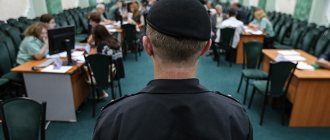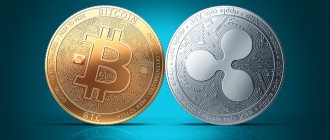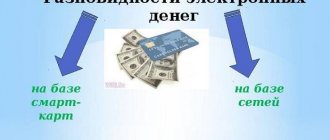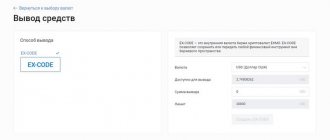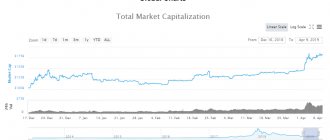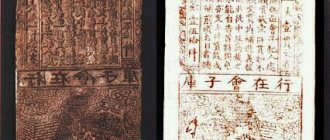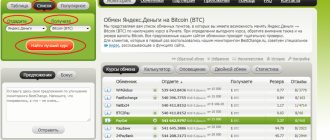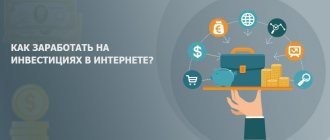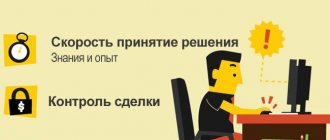First money
The most valuable items usually became the intermediary between goods exchanged in different parts of the globe. In China - cowrie shells. In Ethiopia - salt bars. In Italy - copper ingots. In Ancient Rus' - furs and cattle. And also... sheep, grain, seasonings, horses, cows, cocoa beans, bronze hatchets and iron rods. And if shells and salt did not spoil and were convenient for exchange, then the value of livestock and food could fluctuate greatly over time. Humanity was looking for a more reliable currency - this is how minerals appeared on the scene.
Bronze and copper, gold and silver alloys in the form of rings and bars did not deteriorate, took up little space and were easily divided into parts. In Ancient Greece, ingots weighing up to 60 kilograms were called “talent”. It is important that at this time the ingots reflected the value of the metal from which they were made. In order to pay for the purchased goods, the ingot had to be cut into pieces. And to simplify the task, a mark was placed on the chopped piece indicating the weight.
Over time, the chopped pieces began to be shaped into coins, and the names of states and cities, rulers and names of gods were printed on the surface. The word “ruble” comes from the verb “to chop.” A ruble was originally a name given to a cut piece of hryvnia (a silver ingot). The first domestic rubles began to be printed in 1654. In 1656, copper money began to be produced. Paper money (banknotes) came into use in 1769. Catherine II established an assignation bank, where the first paper money in Russia began to be issued. This measure was necessary to simplify the collection and transportation of taxes - copper coins were very heavy (carts were used to transport them). Paper money backed by copper becomes the main measure for internal circulation.
Emission concept
This term was formed from the Latin word emissio, which means release, respectively, in combination with the word “money” it means the release of money or securities into the economy. But in this case, this translation does not fully reflect the essence. You should know that the meaning of the expression “issue of money” does not literally mean the issue of money.
The creation of new money by issuers (producers of the money supply) does not necessarily provoke an increase in the total volume of money in the country due to the fact that continuous reverse operations take place in the economy in parallel - closing accounts, withdrawing obsolete banknotes, paying off debts on loans.
Read more: How to find out the balance of your VTB card - 7 ways to check the status of your account
In this case, it is not emission as such that is carried out, but only a redistribution of the structural elements of money circulation. Processes that reflect emission, in any of their variants, mean an increase in the total money supply in the country’s economy, and their uncontrolled consequences are always fraught with negative trends.
Each country establishes its own emission schemes, regulating its size, rate and form of circulation, and rules for issuing cash. Economically developed countries establish the dominant role of the central bank in this process.
Modern money
Today in Russia only the Central Bank of the Russian Federation has the right to issue banknotes into circulation. The Central Bank has the following obligations:
- Organization of production, storage and transportation of banknotes and coins;
- Creation of reserve funds;
- Organization of the procedure for conducting cash transactions for credit institutions;
- Establishing signs of solvency of banknotes and coins, the procedure for their destruction, as well as replacing damaged ones with valid ones.
Russian paper rubles are printed in Perm at the Gosznak enterprise. Coins are produced in Moscow and St. Petersburg. The cost of a modern ruble, made from an alloy of steel and nickel, is higher than its face value.
Is the modern monetary system a financial pyramid?
Thus, every dollar, euro or other currency in circulation in the world is backed by a piece of gold bullion stored in the central bank of the US, EU or another country. But in fact, this has not been the case for a long time. When someone single-handedly controls the entire gold reserve of a country and the exact volume of this gold is known only to him, he is very tempted to print much more debt receipts than is possible, would you agree? This is actually what happened in the USA.
I also recommend reading:
Helicopter money: 5 disadvantages
What is helicopter money and when can I expect it?
At some point, the country's Central Bank was transferred into private hands and dollars today are printed not by the US state, but by a certain OJSC (Federal Reserve System), the shares of which are owned by several private individuals. The Federal Reserve then lends the printed money to the US government, which uses it for its own purposes. Such a strange, to put it mildly, monetary strategy led the United States to the fact that its national debt reached $17 trillion.
Every American today owes about 54 thousand dollars to certain individuals who print dollars. Of course, the repayment of such a debt seems unlikely; it is more likely that it will continue to grow.
All the signs of a financial pyramid are evident, and we have already discussed how such economic phenomena end. And this would have been a problem only for the United States if the Bretton Woods Agreement had not been signed in 1944, which made the dollar a world currency. Today, the US financial pyramid relies on many economies around the world, and its collapse will inevitably have a bad impact on each of them, which will undoubtedly affect the population.
Non-cash money
The emergence of non-cash payments has greatly simplified the task of cash circulation. Payments made without cash using credit institutions are called non-cash payments. In Great Britain, already in 1775, payments were made with bills and checks. Most often, non-cash payments are made by legal entities or individuals when large amounts are involved. When making non-cash payments, the mediation of credit institutions is mandatory, through which non-cash transactions are carried out.
According to the Regulations of the Bank of Russia dated June 19, 2012 “On the rules for transferring funds,” transfers of funds are carried out within the framework of the following forms of non-cash payments:
- Settlements by payment orders;
- Settlements under letters of credit;
- Payments by checks;
- Payments for collection;
- Calculations of payment requirements.
Bank cards
This is just a means of accessing a cash account opened with the bank that issued this card. A modern bank card looks like a plastic plate with a magnetic stripe and a chip. The card belongs to the issuing bank, and the card holder has full control over his funds located in the bank account. On the account opened by the bank, you can see all the transactions performed by the client. Using bank cards you can get cash, top up your account through an ATM, or make a non-cash payment. Cards come in debit and credit cards.
A debit card is usually issued by the employer and serves as a convenient “wallet” - its owner can only use his own funds deposited in the account.
A credit card allows you to pay using the funds of the issuing bank. A bank card can work in several payment systems. In Russia, cards of the international payment systems Visa and MasterCard are most often used. If you lose your bank card and notify the bank in a timely manner, your finances will remain completely safe in your account.
Internet banking
Due to the rapid spread of the Internet, changes have occurred in the banking system. Now you can receive banking services and make money transactions through remote banking services. Internet banking can be called differently - Internet banking, online banking, home banking. The main thing is that you get access to account transactions at a time convenient for you and from any computer with Internet access.
Internet banking technology gives you a lot of free time and helps you carry out many financial transactions:
- Payment for services;
- Providing information on banking products;
- Submitting an application for opening deposits, obtaining loans, bank cards, etc.
- Internal transfers to bank accounts;
- Transfers to accounts in other banks;
- Currency exchange;
- Account statements.
Emission processes: distribution of roles
Central Bank:
- issues banknotes - banknotes;
- performs the function of purchasing treasury notes and issuing banknotes against them for balance;
- exercises control over the issue of securities by commercial banks, maintains their accounting and re-discounting, issuing its own money against bills of exchange;
- buys foreign currency, issuing its own against it in parallel.
Read more: Loan-Express online application through your personal account and customer reviews
Treasury Department:
- issues treasury notes;
- produces change coins.
Commercial banks:
- issue loans (credit money) to economic agents such as the state, enterprises, foreign companies, and individuals.
Electronic money
A new financial instrument - electronic money - appeared relatively recently. With their help, you can make a purchase in an online store. Employers can pay salaries to their “remote” employees. The most famous electronic money systems in Russia are WebMoney, Yandex.Money, QIWI. You can top up your e-wallet using payment terminals, some sales offices (Euroset, Svyaznoy), bank branches, transfer systems (Contact, Unistream), as well as a mobile phone account.
Advantages of electronic money:
- Confidentiality and high level of protection;
- Convenience – when opening an account, no documents or personal presence at the bank are required;
- No need to pay for e-wallet service;
- Fast currency exchange and transfers;
- Uniqueness - some goods on the Internet can only be purchased with electronic money.
Money, being a means of exchange for goods and services, constantly changes its appearance, but always serves as a measure of their value. At this point in history, according to experts, it is reasonable to use all existing types of money. Based on your life situations, choose the appropriate forms of payment. A bank card, cash bills, an electronic wallet are just tools that you need to learn to use.
MONEYInvestor's ABC 02/24/2015
What is money emission?
The definition of emission means the process of “production” of new money, as the most important element of the state’s financial system.
Non-cash issue occurs when banks provide loans to borrowers. In this process, the amount of non-cash money on the market increases. If a depositor withdraws cash from a bank account, turnover grows due to cash. Accordingly, the turnover of cash and non-cash funds decreases if depositors repay their loans in one way or another. The state emission system is the process of issuing and circulating national money on the market, regulated by law.
Modern trends in the economic development of countries with market principles have led to the development and significant predominance of the share of non-cash money in their overall monetary circulation, with a parallel decrease in cash.
The first stage of the issue of non-cash money occurs when the main bank (Central Bank) issues loans to other financial institutions at the refinancing rate, which are deposited in their correspondent accounts. The Central Bank retains the amount of issued loans, which is repaid upon their return.
Non-cash money can be issued in the form of loans by all licensed banks, however, this cannot be done without the control of the Central Bank. The volume of transfers between banks is strictly regulated - they are not allowed to exceed the funds of the bank's correspondent account.
In case of insufficient funds, banks usually change refinancing rates. The increased mass of money turnover due to increasing lending is called the banking multiplier effect, which provokes negative economic situations.
Scheme of money emission of the banking system
In the modern economy, the share of bank deposits in relation to the total money supply reaches 70-90% in various periods. These accounts are created by the banks themselves when lending. As a result, a situation has recently developed where the growth of monetary resources significantly outpaces the growth of GDP, which undermines the economy and provokes a financial crisis.
The reverse process - the reduction of credit money is carried out when loans are repaid. If this process is not ensured by an adequate volume of emission, then a procedure for its liquidation is observed - the so-called credit compression.
- The issue of funds can be fraught with danger, especially non-cash ones. When the country's economy is booming, banks begin to lower their requirements for borrowers and issue more loans. Citizens are taking out more consumer loans and spending them on various goods and services. In this case, demand begins to exceed supply - the economy cannot increase production at such a pace. As a result, prices begin to rise.
- For commercial banking organizations, issuing loans to borrowers with low solvency increases the risk of loan default.
- Too much money in circulation increases the rate of inflation. In this case, the Central Bank may increase the minimum rate, and loan rates for individuals and legal entities will rise. This will entail a decrease in demand for loans and will prevent inflation from rising.
- Excessive issuance of money and an increase in the money supply can lead to an increase in the debt of individuals and legal entities to banks.
- The increase in the money supply in circulation outpaces the growth of GDP, which can lead to a financial crisis.
- Another disadvantage is the violation of the balance of payments in the state. When inflation rises, the cost of imported goods becomes lower than domestically produced goods. As a result, domestic enterprises suffer because they cannot sell their products. In this case, there is an outflow of money from production to trade.
- Exports of goods are declining, which leads to a decrease in production volumes and the risk of enterprise closures.
- Consumers also suffer as income is redistributed. When a worker receives a fixed salary, as prices rise, his real income becomes lower. With the amount received, a person will be able to purchase fewer goods and services. At the same time, the income of trade workers increases significantly.
- A budget deficit arises, since costs are calculated at current prices, and tax deductions are made at prices of previous periods.
- With non-cash issuance and issuance of loans to second-tier banks, there is a risk that banks may use these amounts to purchase foreign currency and misuse them.
- Currently, the issue of funds in Russia is not backed by gold. Therefore, excessive release of funds into circulation can lead to depreciation of the national currency.
Read more: Money for a home - online application, review of microfinance organizations and customer reviews
This is the introduction of new cash and non-cash money into circulation, increasing the money supply.
Only the Central Bank of Russia has the right to issue cash in the Russian Federation. New paper bank notes and coins of various denominations are released into circulation to replace already worn-out banknotes or for economic stimulation.
The basis of non-cash payments is the deposit-check issue of securities. It can be implemented not only by the Bank of Russia, but also by commercial banks. In most cases, non-cash issue involves issuing loans to both organizations and individuals. At the same time, the bank multiplier (a special rule) allows commercial banks to lend to clients in an amount significantly exceeding the own funds of credit institutions.
